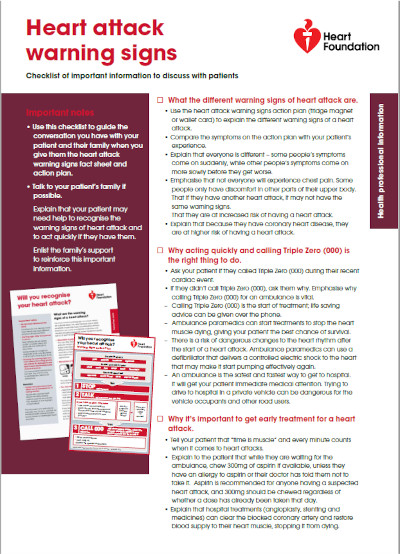Six Steps to Cardiac Recovery Terms / References
Click here to view references to material in this site, as well as other useful cardiac information.
Special | A | B | C | D | E | F | G | H | I | J | K | L | M | N | O | P | Q | R | S | T | U | V | W | X | Y | Z | ALL
H |
|---|
Healing the heart after an acute cardiac eventHealing
the heart after an acute cardiac event Article published in InPsych Authors: Murphy
B, Higgins R, Clarke J, Rogerson M, Jackson A To access the article, click here | |
Health Info Net | |
Health literacy, does it make a difference?Article by Anne Johnson that provides contextual information about health literacy and its importance to health care, nursing, and health consumers. To access the article, click here | |
Healthy weight | |
Heart attackWhat is a heart attack : A heart attack can happen when a coronary artery becomes blocked by a build-up of plaque. The plaque can rupture, forming a blood clot, which means blood and oxygen cannot reach the heart. This damages the heart muscle, leading to a heart attack. Health professionals sometimes use different names for a heart attack, such as ‘myocardial infarction’, or ‘MI’ for short, ‘STEMI’ (more severe) or ‘non-STEMI’ (less severe).
| |
Heart attack warning signs
| |
Heart failure guidelines | |
Heart Foundation - Heart MapsThe Heart Foundation Heart Maps allow you to take a closer look at heart disease indicators across Australia. You can see how state, region, or local governments compare for:
At a state/territory and regional level you can drill further into the specific types of heart-related hospitalisations. These includes rates for; acute coronary syndrome, atrial fibrillation, coronary heart disease, heart attack, heart failure, rhythm, and valve disease admissions, as well as the higher level classifications of cardiovascular disease and coronary heart disease. Click the image to access the Heart Maps | |
Heart Foundation depression screening tool | |


